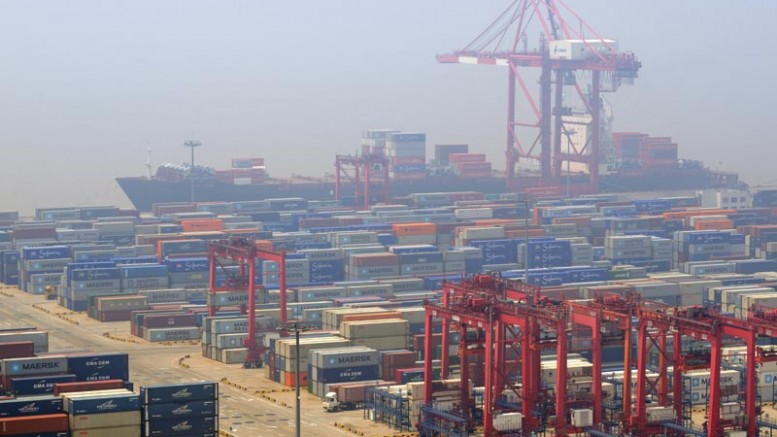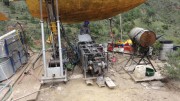Philip Macoun, managing consultant at London-based CRU Consulting, shared an overview on China’s impact on commodity markets, along with his outlook for copper, coal, iron ore and gold, at the recent Prospectors & Developers Association of Canada convention.
In 2014, China was responsible for 39% of global production and 45% of global consumption across 16 commodities, Macoun notes.
Contrary to popular belief, the combined import volumes of the top-10 commodities into China over the last 22 months have picked up. “There has been a corresponding growth in Chinese supply, and across a lot of those commodities, supply has kept pace with the explosive growth in China’s demand.” The country’s top-10 commodities include bauxite, copper, iron ore, coal, nickel, zinc, lead, gold, potash and tin.
“There has been no collapse in the volumes going into China. It is probably less than a lot of people were hoping for, but volumes have been rising,” Macoun revealed.
“Some people talk about China as if it has fallen off a cliff in terms of commodity imports, and the reason for this is, of course, that prices or import values have fallen, but not so much volumes.”
Since January 2012, CRU estimates Chinese domestic prices for the combined 10 commodities have plunged 30%, while volumes remain largely intact.
“The reaction of prices reflects an overinvestment in industry across the board in most commodities, and how difficult it is to close some of that capacity,” Macoun said, listing supply as the culprit for softer prices.
The oversupply has erased more than US$150 billion from China’s top imported commodities in 2015, undermining countries that heavily export to China, Macoun says.
Supplies should be self-adjusting, but it is taking longer than expected, due to delays in mine closures, among other reasons.
CRU says that commodity demand in China has slowed and will not return to previous levels, highlighting that 2015 was the lowest demand growth for 10 major Chinese commodities in more than a decade. (These commodities include steel, coking coal, aluminum, fertilizer, stainless steel, gold, lead, zinc and tin.)
However, forecasted combined annual demand growth for these commodities will increase slightly in the near-term. Commodities such as gold, aluminum, zinc and copper should have better growth prospects.
CRU estimates compounded annual growth rate from 2015 to 2020 will remain positive for most commodities, since it expects the Chinese economy to go through a cyclical upturn in 2017 to 2018.
“China has been an engine of growth for commodities through the whole super cycle, going back 15 to 20 years,” Macoun said, noting that it will drive growth for the next five to 10 years, despite the slower pace.
CRU predicts the downward pressures on copper prices will continue this year, with prices averaging US$4,600 per tonne due to weak global consumption and a strong U.S. dollar, among other factors.
Copper prices should bottom in 2016, with a deficit emerging in 2018 to 2019, with prices rebounding slightly in 2017, Macoun says. “But we don’t see copper prices reaching a US$6,500-per-tonne average for the year until 2019.”
Chinese hot metal production collapsed last December, driving down hard coking coal prices to under US$80 per tonne, Macoun says, explaining the rally in prices is “probably not sustainable” without more supply cuts in 2016.
CRU expects metallurgical coal prices will increase in 2017, as the “market rebalances and cost inflation returns.”
Meanwhile, it predicts poor fundamentals for iron ore in 2016 and 2017, with prices holding at US$40 per tonne, and a weak recovery expected afterwards. “Our view for the next few years is that Chinese iron ore miners will still be feeling pain,” Macoun said.
CRU’s outlook on gold, however, is more upbeat. The precious metal has gained 15% so far in 2016, helped by strong demand in China and India, lower production, and low or negative interest rates. China’s official buying should keep rising, supporting the metal’s price increase in the near-term.
“We are not strong bulls for the medium-term on gold, but it does look well supported in the short-term for 2016, at least. And if you look at currencies, if you see any weakness in the U.S. currency, it is probably a good sign for gold,” Macoun said.
He notes Chinese government spending has increased and interest rates have been lowered to stimulate the economy. CRU expects to see an “orderly transition” of the Chinese economy to a “new normal.” However, he cautions that there could be a hard landing.
Macoun is cautiously optimistic on commodity prices for the next three years. “By 2019, most commodities should be in a better place — but not dramatically better off.”






Be the first to comment on "PDAC 2016: China remains ‘engine of growth’"